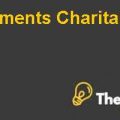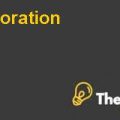Problem Statement
How can Ghana uplift its declining economy, and become a middle-income country bylow-income country?
Introduction to Ghana
Ghana is the country in West Africa; itwas formerly known as the Gold Coast. The country gained independent from the Britain in 1957, and it became first sub-Saharan desert nation in Africa that got freedomfrom the British colonial rule. However, the country faced many problems,such as economic, political, etc. Meanwhile, the country was divided into tribal systems. It was tough for the governments to ensure the interest of every tribe.
Furthermore, due to the tribal system in the country, political chaos wascommon, and country continuously faces political instability, and economical as well. Meanwhile, it became aone-part state under the leadership of the Nkrumah elected in 1960. However, due to political instability in the country, the military had overthrown many governments. Indeed, it was under military ruler Lt Rawlings, who later approved anew constitution that introduced themultiparty system.
Lt Rawlings was elected as president in 1992. However, the tribal clashes continued again that resulted inone thousand deaths and 150,000 displaced peoples following the tribal and ethnic clashes, which started over the issue of land ownership in 1994. Furthermore, on December 2000, Johan Kufuor was elected as the president by beating the vice-president John Atta Mills in the presidential elections.
Ghana National Economic Strategy Harvard Case Solution & Analysis
Furthermore, under the leadership of PresidentKufuor, many developments were seen in the national economy of the country and political stability increased as well. However, the government decided to remove the subsidies on petrol, causing its price to be raised by 60%. Furthermore, the country had been going through amajor phase of economic development because the newly elected President Kufuor contemplated a national economic strategy to uplift the poor economic growth of the country.
Economy of the Ghana
Ghana’s economy had gone through many breakdowns, even its GDP had been negative due to many governmental policies that wereinitiated, but they resulted in inflation, thebalance of payment deficit and unemployment in the country. Ghana had been alow-income country in Africa, so thegovernment had emphasized on public expenditure such as a social development program that could reduce poverty from the country. See Figure 2, 3, and4.
Furthermore, the poverty rate decreased in the country in 1990, but it was one side of the picture. Indeed, on the other side of the picture. The situation was worse than expected for the country, feeding peoplein less developed areas where peoples were truly living below the poverty line and medical issues were high because the youth of these areas were out of work. Meanwhile, the livingconditions were pitiable.
Furthermore, the country had been facing many serious problems regarding its natural resources, on which the country’s economy was dependent. The forest production had been significantly contributing to the economy. But, half of forest was converted to the agriculture land by the Slash-and-burn. However, the reason was to expand the cocoa production the country, although the production had declined due to soil erosion.
In contrast, the timber, fish and non-timber forest products were also declining in the country..........................
This is just a sample partical work. Please place the order on the website to get your own originally done case solution.











